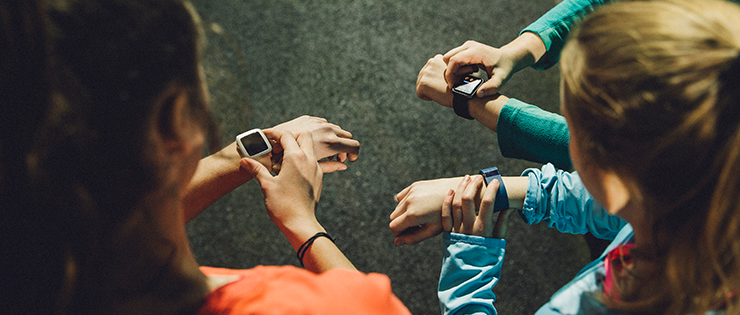
Growing up, mobile phones were not as common place as they are now and were a lot less sophisticated. Now we can carry in our pockets a phone, a camera and a stereo in our pockets and more recently, on our wrist in the form of a watch. Once the domain of fun or simply staying connected, technology is now using its reach across the population to venture into health care.
Wearables tend to encompass everything from our phones to smart watches and exercise watches. They are a part of a bigger movement of quantifying virtually everything about us; where we are, how many steps we walk, how often we stand up, how we sleep and how our heart rates are. Wearables measure collect and store data on our bodies physiological responses. That means what they do and how they work. The fact that an estimated 325 million people have a wearable device around the world gives access to an extraordinary amount of data or ways to impact on people’s health and wellbeing.
The ways in which wearables can impact on our health are many. Some are already readily available such as sleep patterns or activity. Others can be added in such as heart rate and blood pressure monitors, and depending on your interaction, your wearable can be used to monitor your mood. Some even note if you’ve fallen and can’t move, alerting help which can be useful if you live alone or for elderly people. Eventually, we might see wearables helping diabetics monitor blood sugar. There is a lot of hope that wearables will be able to improve prevention of health problems, monitor our health, feedback to our doctors even from a distance and personalize the health advice we get. In 2018, in the US, Apple Watch even released a feature that allows their watch to monitor heart rate and rhythm and alert the wearer to get checked at a doctor if it was abnormal.
When it comes to their impact on health, it’s still fairly early days with wearable technology. In addition, we will only get a good benefit from these devices if we collect the right data and use the data properly. The technology is still being honed to ensure that it gives us the right data to allow the right kind of motivation, feedback or even treatment for each individual. Some of the biggest barriers to more widespread use of wearables include making sure devices are available to suit all people, improvements to technology in terms of accuracy or battery life and of course, secure data storage and transmission. And of course, these devices need to be accessible to many more people and cost can be a big barrier to everyone having something that tracks everything that we do at the moment.
That doesn’t mean that we can’t get the most out of wearables in the meantime. One of the strengths of wearables as they are right now is to help us with our health and fitness goals. To get the most from your wearable devices, set a goal say for exercise that you feel is achievable and use your device to give you feedback on how you’re going.
The future of wearable devices is likely to bring some really exciting changes to the way we look after ourselves and interact with health care. That does not mean that you can’t get something from them already by keeping you on track with your health and fitness goals. Watch this space though, health is coming to your wrist in the very near future.